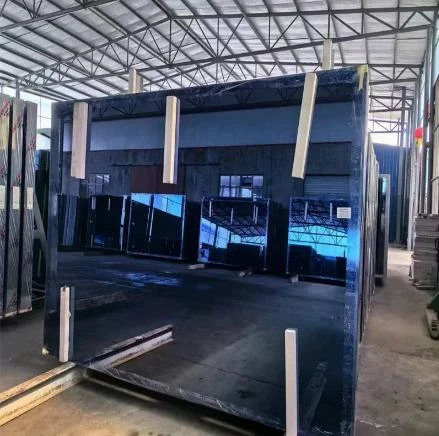Dec . 15, 2024 21:06 Back to list
laminated safety glass
Understanding Laminated Safety Glass A Comprehensive Overview
Laminated safety glass is a type of glass that is designed to provide enhanced strength and safety compared to standard glass products. It consists of two or more layers of glass sandwiched together with an interlayer, typically made of polyvinyl butyral (PVB) or ethylene-vinyl acetate (EVA). This unique construction offers numerous advantages, making laminated safety glass a preferred choice in various applications, from automotive to architectural designs.
The Composition and Manufacturing Process
The production of laminated safety glass begins with the precise cutting of the glass sheets to the desired size and thickness. The interlayer is then placed between the glass layers, and the assembly undergoes a process of heating and pressurization, typically in an autoclave. This method not only bonds the layers together but also ensures that the glass retains its integrity even when subjected to impacts. In the event of breakage, the glass fragments adhere to the interlayer, minimizing the risk of injury caused by sharp glass pieces. This feature is particularly critical in public spaces, vehicles, and residential buildings.
Benefits of Laminated Safety Glass
1. Robust Safety Features One of the primary benefits of laminated safety glass is its ability to withstand impacts. The interlayer provides a barrier that prevents the glass from shattering completely upon impact, reducing the risk of injury from flying shards. This characteristic makes it an ideal choice for windows in schools, hospitals, and high-traffic public areas.
2. UV Protection Laminated safety glass can block up to 99% of harmful UV rays, which can lead to skin cancer and cause fading to interiors over time. This quality not only protects individuals but also helps maintain the integrity of furniture and textiles within homes and businesses.
3. Sound Insulation In addition to its safety features, laminated safety glass also provides excellent sound insulation. The interlayer absorbs sound vibrations, making it an ideal choice for applications in urban areas where noise pollution is a concern. This property makes it increasingly popular in residential buildings, offices, and hotels.
laminated safety glass

4. Energy Efficiency Laminated safety glass can improve energy efficiency in buildings. By incorporating low-E coatings or other technologies, it can minimize heat transfer, ensuring that indoor temperatures remain stable. This leads to reduced energy costs for heating and cooling, which is a significant advantage for both residential and commercial sectors.
5. Aesthetic Versatility Laminated safety glass is available in various colors, tints, and finishes, offering design flexibility. Architects and designers can use it to create visually appealing structures without compromising on safety. Whether used in facades, skylights, or decorative elements, laminated safety glass enhances the overall aesthetic of a building.
Applications of Laminated Safety Glass
Laminated safety glass is widely used across numerous industries. In the automotive sector, it is common in windshields due to its shatter-resistant properties. In architecture, it is employed in storefronts, curtain walls, and glass railings. Additionally, it finds application in furniture design, such as coffee tables and shelves, where safety and style must go hand-in-hand.
Moreover, laminated safety glass is increasingly used in security applications. Bullet-resistant varieties are utilized in banks, military installations, and high-security facilities, where preventing forced entry or vandalism is a priority. The ability to customize the thickness and strength of the glass according to specific security needs further enhances its appeal in these environments.
Conclusion
Laminated safety glass is a remarkable innovation that combines safety, aesthetic appeal, and functionality. Its ability to protect against impacts, filter UV light, minimize noise, and enhance energy efficiency makes it a versatile choice across various applications. As safety standards continue to rise and the demand for sustainable building materials grows, laminated safety glass is poised to play an increasingly important role in our daily lives. Whether you are an architect, builder, or homeowner, understanding the benefits of laminated safety glass can help you make informed decisions that prioritize safety without sacrificing design or functionality.
-
Safety and Style with Premium Laminated Glass Solutions
NewsJun.24,2025
-
Reinvents Security with Premium Wired Glass
NewsJun.24,2025
-
Premium Float Glass Line for Modern Architecture
NewsJun.24,2025
-
Low Emissivity Glass for Energy-Efficient Architecture
NewsJun.24,2025
-
High-Performance Insulated Glass Solutions for Modern Architecture
NewsJun.24,2025
-
Elevates Interior Style with Premium Silver Mirror
NewsJun.24,2025
Related PRODUCTS














